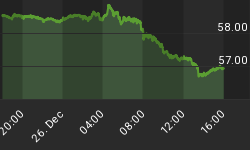As we have stated many times, one of the primary objectives of the Fed's quantitative easing (QE) policy is to attempt to reinflate asset prices in order to improve global balance sheets and restore some semblance of the wealth effect. Some key S&P 500 levels can help us monitor the health of the current bull market and the effectiveness of the Fed's QE experiment.
Traders, investors, and trading algorithms have good memories, especially when it comes to potentially important levels in the financial markets. Based on recent market action, it appears as if their memories have zeroed in on the 190-week, 210-week, and 275-week moving averages. Using weekly charts going back to 2004, we will show one way to monitor the current battle between the bulls and the bears. Based on the actions of buyers and sellers in recent years, a weekly close below 1,175 would increase the downside risks in the intermediate-term. From a bullish perspective, a weekly close above 1,219 would be a welcome sign. A weekly close above 1,200 also represents a step in the right direction for the bulls.
The chart below shows the moving averages that are currently important to traders, money managers, and investors. The green arrows indicate areas where buyers stepped in near these moving averages (MAs). The red arrows show areas where the MAs sparked some selling pressure. This analysis was completed prior to the S&P 500's big rally on December 1st. The 25 point gain supports the significance of the moving averages studied here since the market held near a key level. All charts are as of the close on November 30, 2010.

The following charts will break the chart above into smaller segments allowing us to take a closer look at the past behavior of market participants. The chart below is in the context of an ongoing bull market. Notice how the MAs only slowed the market's primary uptrend; eventually the primary trend won out as the MAs were cleared.

During the bear market of 2007-2009, the 190, 210, and 275-day moving averages acted as a temporary barrier before the primary downtrend was able to break out to the downside in September of 2008.

If we fast forward to the present day, we see these moving averages have been important in both April 2010 (red arrow) and over the last eight weeks.

This band of resistance from the three MAs (green, red, and blue lines above) represents a significant test for both the current bull market and the Fed's quantitative easing (QE) policy. A significant market failure at the band formed by the 190, 210, and 275-week moving averages may indicate global deflationary forces are stronger than the Fed's printing press. A typical bull market would pause near these barriers, but eventually the primary uptrend would carry stocks to higher highs. Since the present day is far from typical, we need to monitor the situation with an open mind.
Our guess is any significant market weakness will be met with stepped up money-printing rhetoric from the Fed and other central bankers. As we mentioned in 2010-2011 Investment Contingency Plans, the Fed represents a wild card for money managers and investors if asset prices weaken significantly again. Prior to making asset allocation decisions for 2011, it is important to understand the Fed's QE process and policy objectives. Past commentary related to the Fed, quantitative easing, asset inflation, the wealth effect, and balance sheets can be found on this QE resources page.
Moving back to the present day S&P 500, if 1,175 can hold, a subtle, but important shift may be taking place paving the way for the next leg up in asset prices. All bets are off if the market fails to hold 1,175 or near the 190-week moving average.

















